Hair Transplantation
Conveniently located to serve Seattle and Bellevue
Jump To

FUE, or follicular unit extraction, is a minimally invasive hair transplant procedure in which the patient’s own hair follicles (donor area) are transplanted into areas of the scalps that have thinning hair or hair loss (recipient area).
Who Is a Good Candidate for FUE?
Typically, men who have pattern baldness and/or thinning hair are good candidates for a follicular unit extraction hair transplant.
Hair Transplantation for Women
As a woman, one of the most distressing things that can happen is experiencing significant thinning hair. Hairloss in women isn’t a topic that’s commonly discussed. Even though many hair transplantation techniques are marketed towards men, there are a lot of women who suffer from a loss of hair density as they get older. Fortunately, a hair transplant is also possible for women using the same techniques. Women experiencing thinning hair can benefit from the innovative hair transplantation techniques employed by Dr. Parikh.
The Consultation
During your consultation with Dr. Parikh, he will ask you about your medical history and any other procedures you may have had. He will also ask you about any medications you take, including NSAIDs. You should stop taking NSAIDs like ibuprofen and aspirin before your procedure, as these medications may increase the risk of bleeding.
Dr. Parikh will examine your scalp and your hair, then determine the best plan of treatment for your specific desired outcome. If you have any questions about this procedure, do not hesitate to ask Dr. Parikh during your consultation, as he will be happy to give you as much information as possible about this procedure.
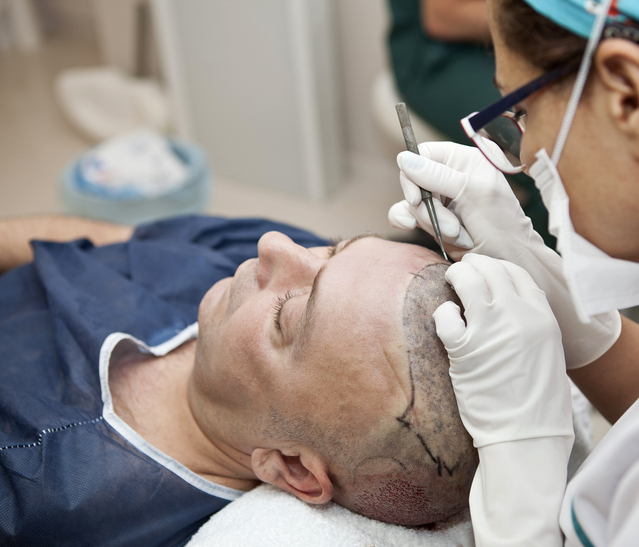
The Procedure
During this procedure, the team will shave an area of your head (typically, somewhere in the back). Hair follicles are removed using a small instrument, then strategically placed in the recipient area so the results will look natural. When the procedure is finished, bandages or gauze may be placed on the area(s).
Reviews
My hair transplant was done by Dr. Rikesh Parikh and his team. They did an amazing job and made me feel very comfortable in trusting the process and their work. They are regularly calling to check in with me to make sure everything is okay. If anyone is considering to get any cosmetic work, I would recommend going to Dr. Parikh and his team.
Sunny K.
Recovery and Results
Typically, FUE is an outpatient procedure, which means you can go home on the same day or your hair transplant. You may experience swelling, redness, and/or pain after your procedure. These side effects are normal and will likely go away within a week or so after your FUE treatment, and Dr. Parikh may prescribe medications to help deal with the side effects.
Generally, you can return to work and continue your normal daily routine a few days after your procedure. It is important to follow all aftercare instructions that Dr. Parikh gives you in order to ensure that you heal properly.
Results from FUE are not seen immediately. Typically, around three months after your procedure, you should start to see new hair growth in the recipient areas of your scalp. At about the six-month mark, you should start to see an ample amount of new hair growth, and both the donor and recipient sites should continue to grow naturally.
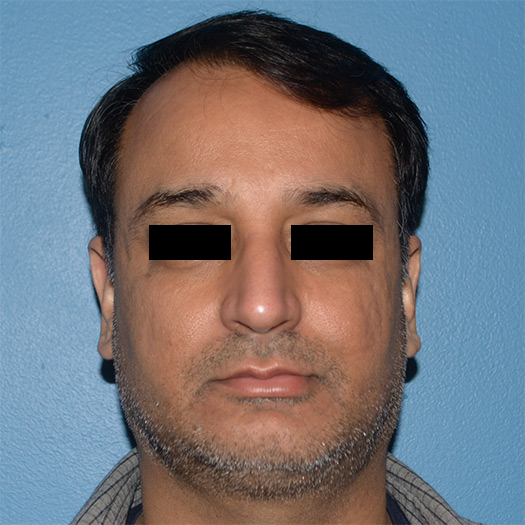
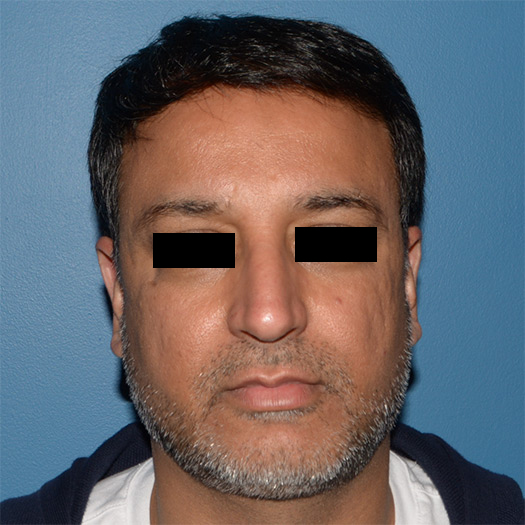
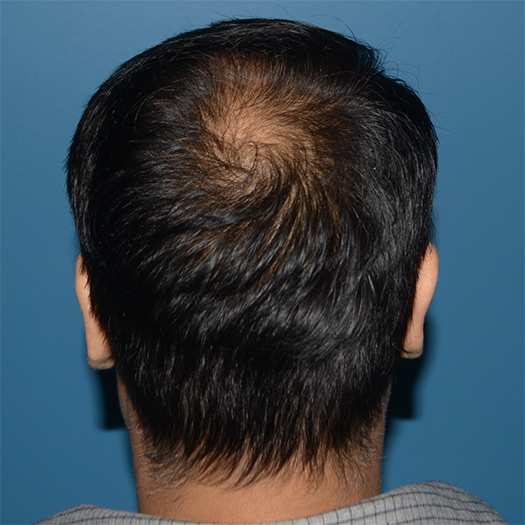
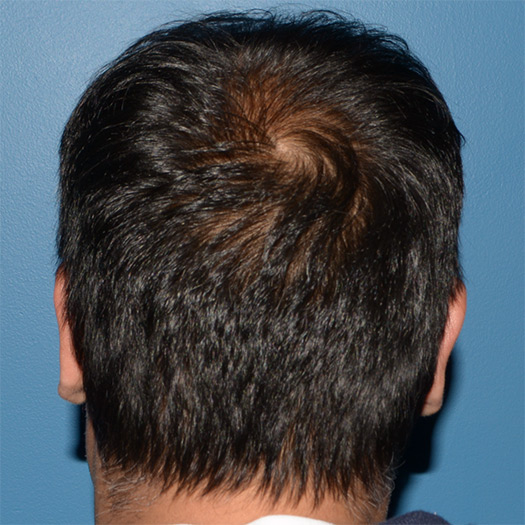
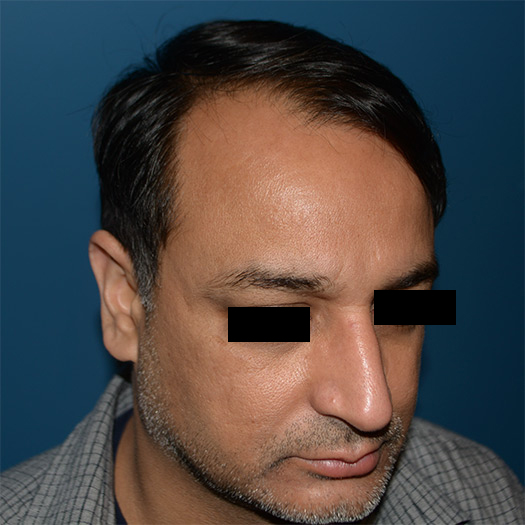
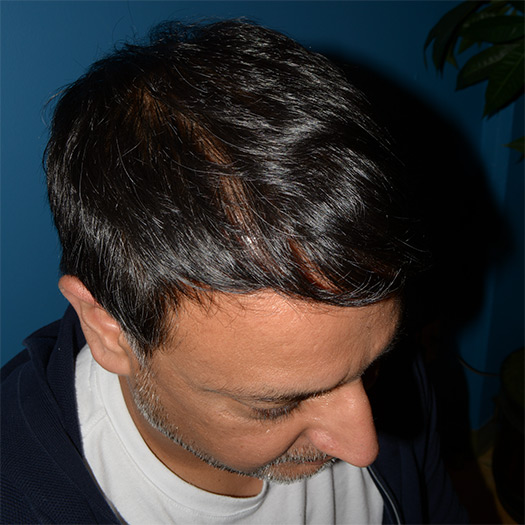
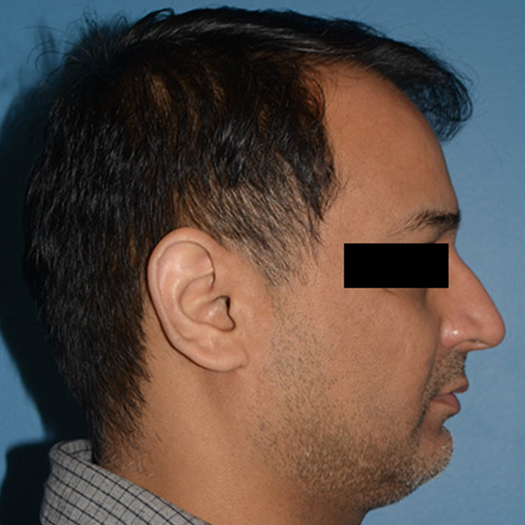
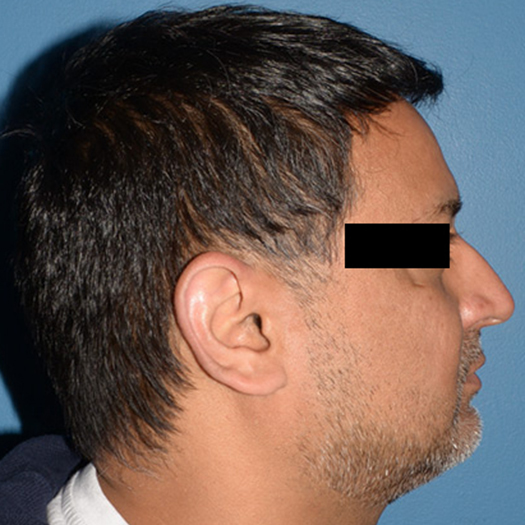
Cost of FUE
The cost of this procedure will vary from patient to patient and will depend on multiple factors, like the length of the procedure, your hair loss pattern, and other variables. If you have any questions about the price of this procedure, be sure to ask Dr. Parikh during your personalized consultation.
Hair Loss Alopecia
Loss of hair affects millions of people in the United States every year. There are different reasons for hair loss that can affect the scalp and the body. Hair growth or follicles are in a continuous cycle throughout life. Premature entry into the telogen phase can result in premature hair loss or early balding.
Anagen: Active growth Phase 2-7 years 90 % of the hair
Catagen: End of Anagen Phase 2- 3 weeks (club hair) enters the telogen phase
Telogen: The Resting Phase 3 months 10 % 50 – 100 club hairs are shed per day scalp
Types of Hair Loss
1. Androgenetic Alopecia: The most common form of hair loss. Also known as Male Pattern Baldness or Female Pattern Baldness.
Male Pattern – Loss of hair at the top of the head or crown and the temple area receding. Final outcome is the potential loss of hair at the top with only a ring of hair around the perimeter leading to full baldness.
Female Pattern aka Female hair loss (alopecia) – Thinning off the hair where the scalp can be seen through the hair. Widening of the hairline can also occur but usually does not proceed to full baldness. Approximately 30 % of women and over 60 % of post-menopausal women will experience hair loss.
Ludwig Classification
Stage 1 – Thinning at the top no scalp showing
Stage 2 – Scalp begins to show widening of the midline of the hair
Stage 3 – Large amount of thinning much of the scalp being seen through
Treatment for Female Hair loss is more limited than for Men.
Rogaine 5% Minoxidil is FDA approved medication that takes months of use to see the results. Not all will get results with this medication. IT must be continued for maintenance or the hair will continue to fall out.
Spironolactone: A diuretic that is also anti-androgen can have some value if Rogaine has no effect. There are specific side effects of all medications.
Iron Supplement: Iron deficiency can cause hair loss in men or women.
Hair Transplant: Involves FUE or Follicular Unit Extraction or Strip technique. The grafts are removed and cut and transplanted to the thin areas of the scalp.
2. Alopecia Areata: Autoimmune disorder where the individual’s own immune system attacks the hair follicle thereby destroying it. This can occur in adults and children. If total hair loss is seen it is called Alopecia Totalis. It is usually patchy loss of hair that can affect the body as well and the facial hair.
3. Cicatricial Alopecia: Scar alopecia develops from inflammation in the scalp which results in scar tissue that damages the follicles. The hair does not grow in these areas. It can be associated with itching, redness, and swelling due to the inflammatory process.
4. Traction Alopecia: When tension is pulling on the hair continuously or often. For example, braids or ponytails pulling or twisting the hair causes the hair to fall out.
5. Trichotillomania: Behavioral disorder that causes the individual to pull their own hair out. Treatment is based on behavioral therapy.
6. Telogen Effluvium: The resting phase which typically 10 % of the hairs are in with a daily shed of 50-100 hairs per day increases to over 300 hairs per day, with more hairs entering the telogen phase. There are multiple causes including medications, hormonal imbalance, vitamin deficiency, trauma, surgery, or stress. It can last 6 months and most resolve.
7. Anagen Effluvium: The growth phase of the hair follicle is affected. Normally 90 % of the hairs are in anagen. Therefore medication such as chemotherapy, which stops the growth phase quickly and the production of follicles leading to temporary baldness.
Schedule Your Consultation Today
If you think you could benefit from FUE and would like to learn more about this procedure, contact the office of Dr. Rikesh Parikh to set up a consultation today. Dr. Parikh is a highly acclaimed double-board-certified plastic surgeon who proudly serves patients in the Bellevue and Seattle area and will answer any questions you may have about this procedure.
